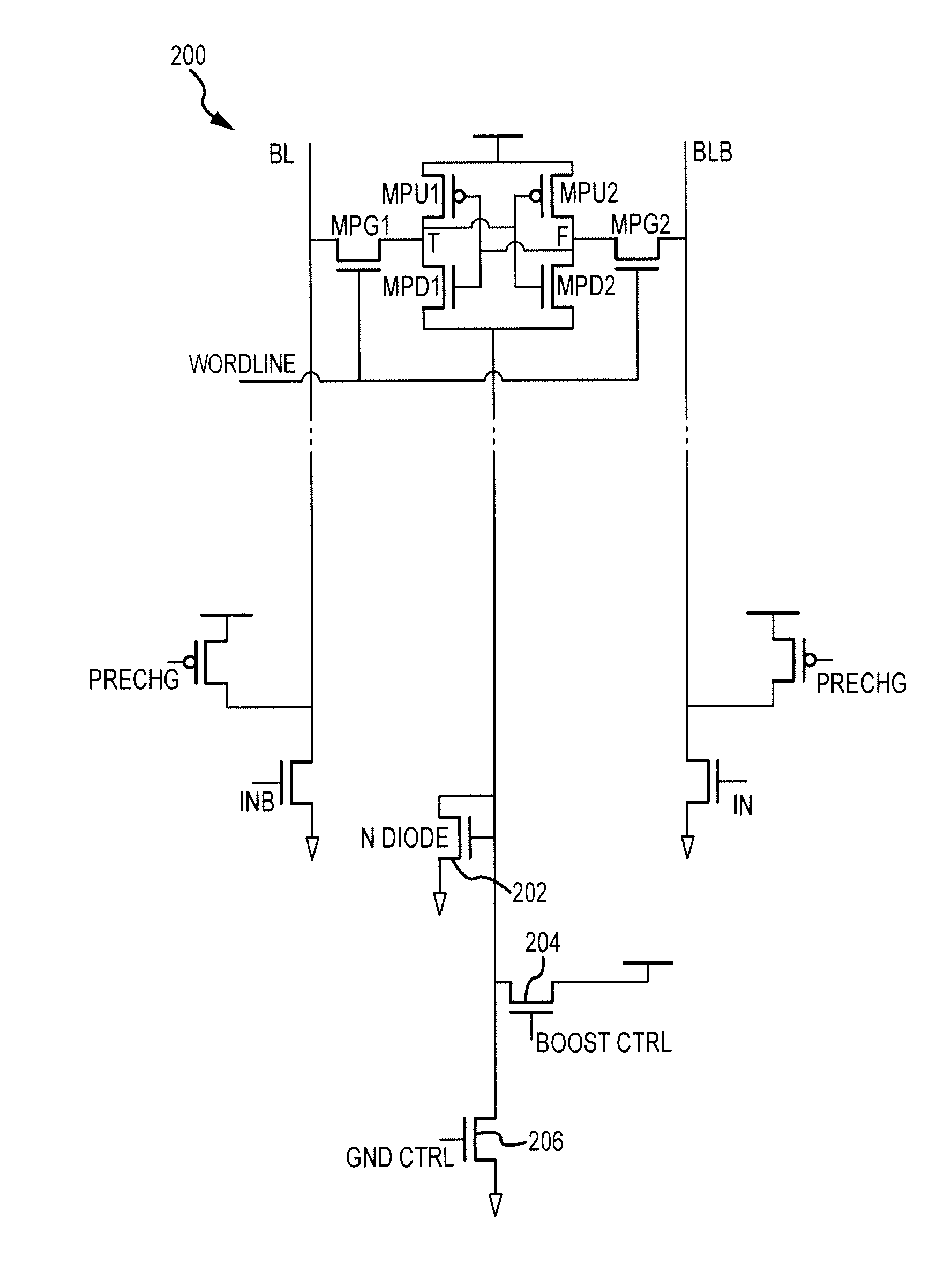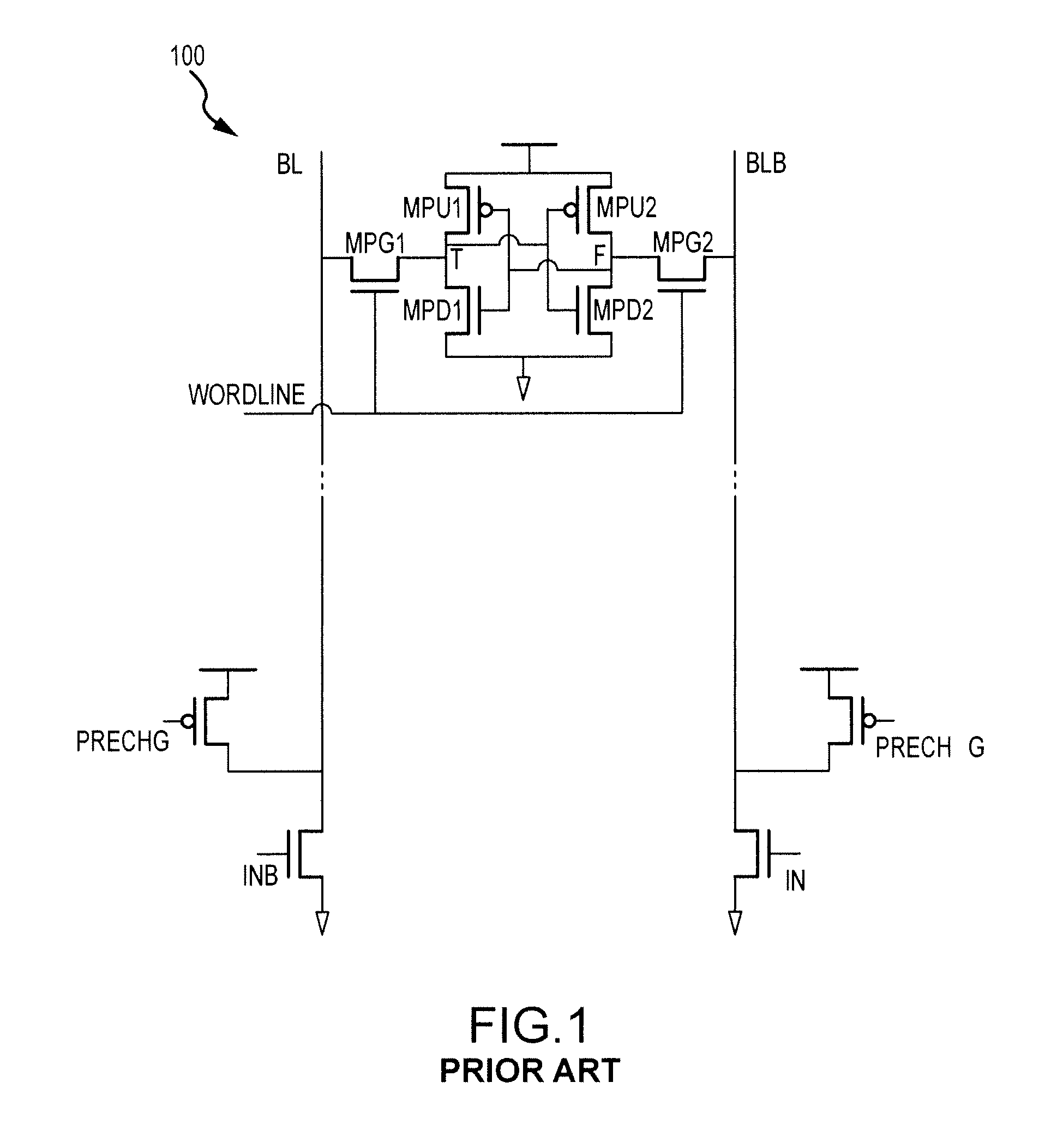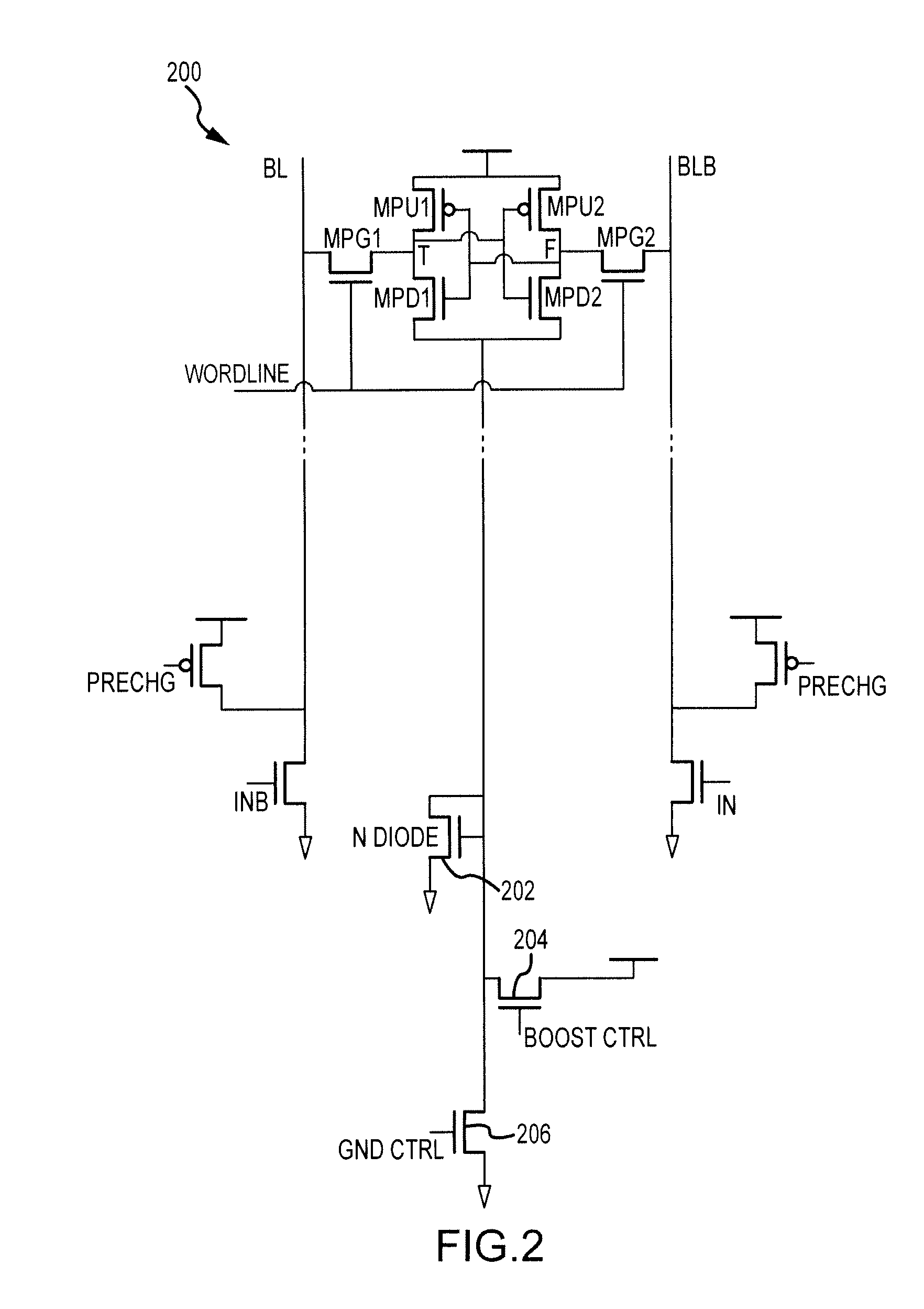Self-timed write boost for SRAM cell with self mode control
a write boost and self-timed technology, applied in the field of sram cells, can solve the problems of data corruption, many problems in sram memory, write failure in sram memory cells, etc., and achieve the effect of less boost and good writability
- Summary
- Abstract
- Description
- Claims
- Application Information
AI Technical Summary
Benefits of technology
Problems solved by technology
Method used
Image
Examples
Embodiment Construction
[0019]In a conventional SRAM memory cell, such as memory cell 100 in FIG. 1, there is word line that activates the memory cell read / write operation, precharge block for precharging BL / BLB after read / write operation, and write driver NMOS which is used to pull down BL / BLB in write operation. In / Inb are data inputs and its inverted signal used to write a zero or one depending on data logic.
[0020]Referring now to FIG. 2, an SRAM memory 200 includes a write boost circuit coupled to the ground power terminal of an SRAM cell, the write boost circuit including an N-channel diode-connected transistor 202, an N-channel transistor 204, and an N-channel transistor 206. During a write cycle, the GND CTRL Signal is set low, thus cutting off GND to the SRAM memory cell. The boost CTRL signal is then asserted high and thus the GND line of the SRAM memory cell is raised to boost writability. N-diode 202 is used to limit the voltage up to VTnmos. Writability is much poorer due to a slow NMOS pass ga...
PUM
 Login to View More
Login to View More Abstract
Description
Claims
Application Information
 Login to View More
Login to View More - R&D
- Intellectual Property
- Life Sciences
- Materials
- Tech Scout
- Unparalleled Data Quality
- Higher Quality Content
- 60% Fewer Hallucinations
Browse by: Latest US Patents, China's latest patents, Technical Efficacy Thesaurus, Application Domain, Technology Topic, Popular Technical Reports.
© 2025 PatSnap. All rights reserved.Legal|Privacy policy|Modern Slavery Act Transparency Statement|Sitemap|About US| Contact US: help@patsnap.com



